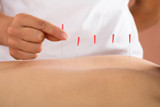How to Measure Pinch Strength
Pinch strength assessment is a crucial tool used in various medical and occupational settings to evaluate the functional capacity of the hand and forearm muscles. It is particularly important in occupational and physical therapy, where precision grip strength can provide insights into a patient’s overall hand function, ability to perform daily tasks, and readiness for work. This article outlines the methodology, uses, and interpretation of pinch strength tests, highlighting their importance in clinical and occupational assessments.
Methodology
Pinch Strength Tests
There are three standard pinch strength tests commonly performed using a pinch dynamometer or pinch meter. These tests include:
- Lateral Pinch (Key Pinch):
- Position: The client is seated with the elbow flexed at 90 degrees, arm adducted at the side, and the forearm in a neutral position.
- Procedure: The pinch meter is placed between the radial side of the index finger and the thumb. The client is then instructed to pinch as hard as possible.
- Three-Point Pinch (Three-Jaw Chuck Pinch):
- Position: Same as the lateral pinch.
- Procedure: The pinch meter is placed between the pulp of the thumb and the pulp of the index and middle fingers. The client pinches as hard as possible.
- Two-Point Pinch (Tip-to-Tip Pinch):
- Position: Same as the lateral pinch.
- Procedure: The pinch meter is placed between the tip of the thumb and the tip of the index finger. The client pinches as hard as possible.
Each test should be repeated three times, and the average of the results should be calculated. It is essential to calibrate the equipment at least annually to ensure accuracy. Below are the norms for each of the three tests (these norms pinch test chart were taken from Baseline Evaluation Instruments Pinch Gauge Instructions).
Tip Pinch Strength Norms:

Key Pinch Strength Performance Norms:

Palmer Pinch Strength Performance Norms:

Uses of Pinch Strength Tests
1. Occupational and Physical Therapy:
- Pinch strength tests are invaluable in assessing the hand's functionality, aiding in the development of treatment plans, and tracking progress over time.
2. Workers' Compensation Cases:
- These tests help employers determine when employees are ready to return to work or start a job. They are particularly important in professions requiring extensive use of hands, ensuring that candidates are screened to prevent injuries.
3. Functional Capacity Evaluations (FCE):
- Pinch force gauges are used to estimate the "sincerity of effort" or the "coefficient of variation." This information is crucial in determining a candidate's ability to perform tasks that require manual dexterity and fine motor skills.
4. Post-Offer Evaluation Cases:
- These exams can indicate an employee's predisposition to repetitive motion disorders, such as Carpal Tunnel Syndrome.
5. Neurological Assessments:
- The pinch grip test is also used to examine neurological dysfunctions, such as Anterior Interosseous Nerve Syndrome (AINS). AINS is a condition that affects the anterior interosseous nerve, often due to compression between the heads of the pronator teres muscle or entrapment in individuals with anatomical abnormalities.
Contraindications and Precautions
Contraindications:
- Pinch strength testing is contraindicated before full healing following a fracture, ligament repair, tendon laceration, or tendon transfer of the forearm, wrist, or hand. Testing should only proceed with the approval of the referring physician.
Precautions:
- Testing should be deferred until resistive exercises or strengthening has been approved by the referring physician.
Interpretation of Results
The results of pinch strength tests provide valuable information about a person's hand functionality and overall health. A positive sign is indicated by the inability to pinch tip to tip, which can signal underlying neurological or muscular issues.
Normative Data:
- Results vary based on factors such as age, gender, hand dominance, and overall health. Normative data, like those from Mathiowetz et al., can help compare an individual's performance to expected averages. For instance, the mean pinch strength for a 20-24-year-old male's right hand is approximately 18.0 pounds for a tip-to-tip pinch and 26.0 pounds for a lateral pinch.
Conclusion
Measuring pinch strength is a critical component of functional capacity evaluations in both medical and occupational settings. By following standardized methods and interpreting results accurately, clinicians can gain valuable insights into a patient's ability to perform tasks requiring manual dexterity, develop effective treatment plans, and make informed decisions about a patient’s readiness to return to work. Proper execution and interpretation of these tests are essential for ensuring the health and safety of individuals in various professional and clinical scenarios.
Reference:
Pinch Strength (Topend Sports)
Pinch Grip Test (Physiopedia)
Related Blog Post:
Pinch Strength Testing with a 5-Position Pinch Dynamometer
Recent Posts
-
Acupuncture vs. Dry Needling: What’s the Difference?
At first glance, acupuncture and dry needling might seem identical. Both involve inserting thin need …Jun 11th 2025 -
What Is Dry Needling? A Modern Approach to Pain Relief and Muscle Recovery
Chronic muscle pain, tension, and restricted movement can significantly impact your daily life, sign …Jun 11th 2025 -
The Kinetic Chain and Its Importance?
The kinetic chain is a key principle in physical therapy, referring to the way muscles, joints, and …Apr 18th 2025



